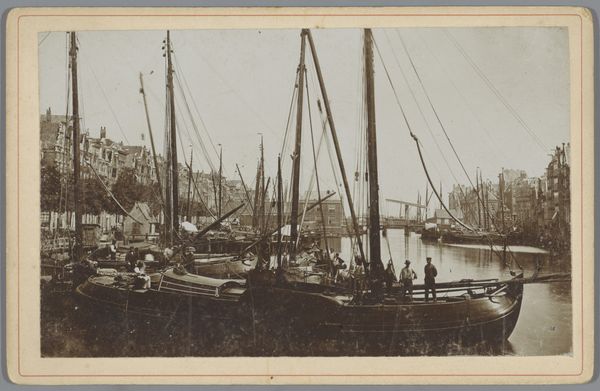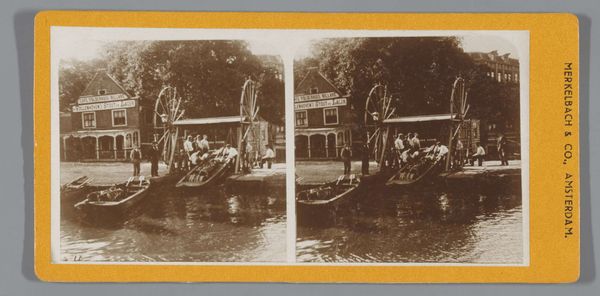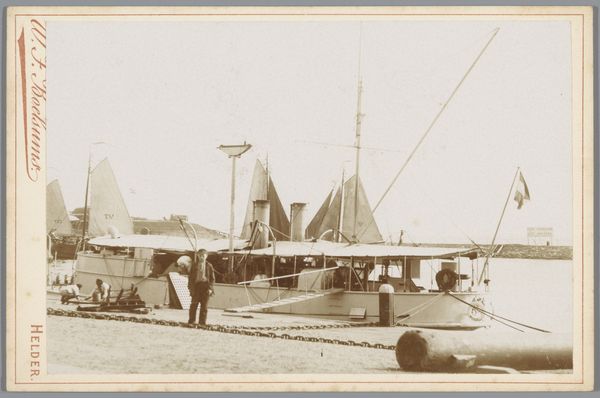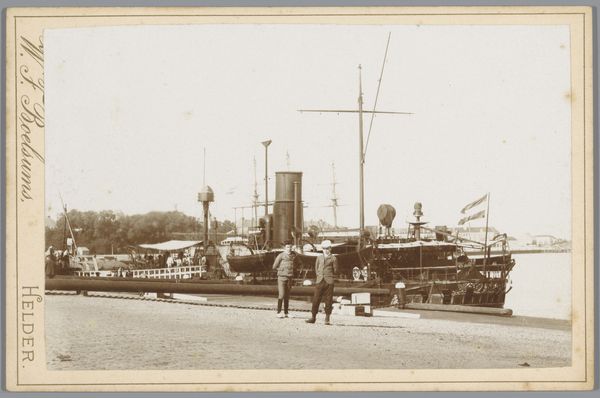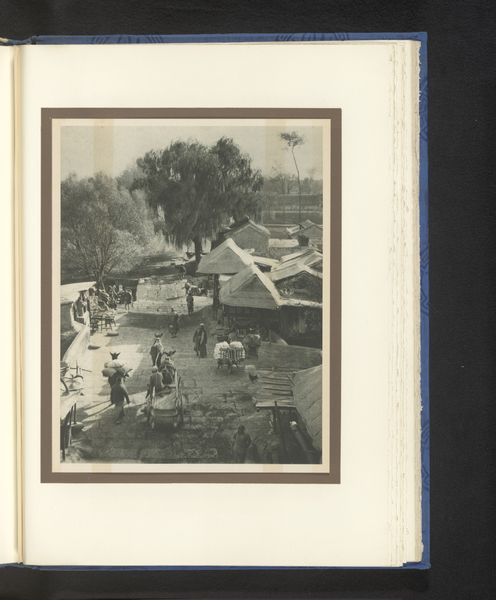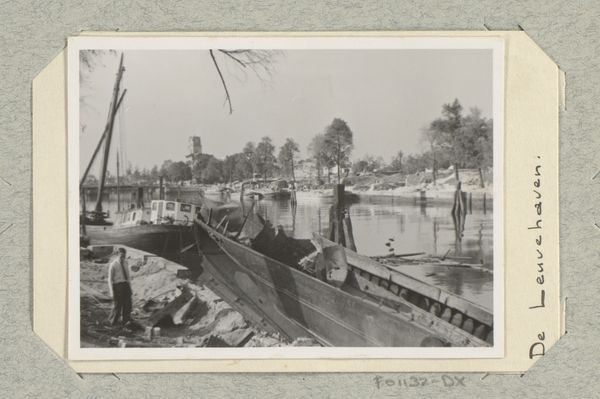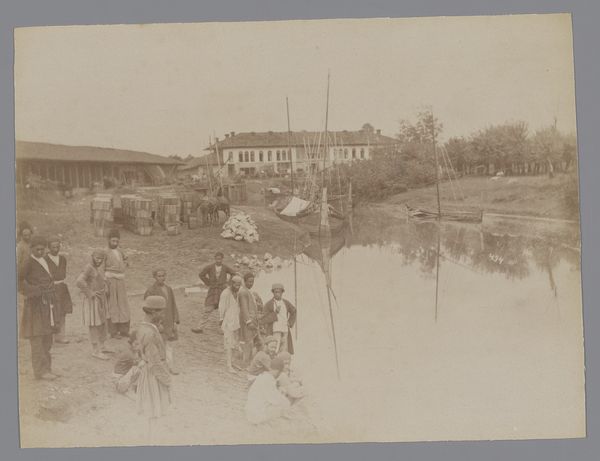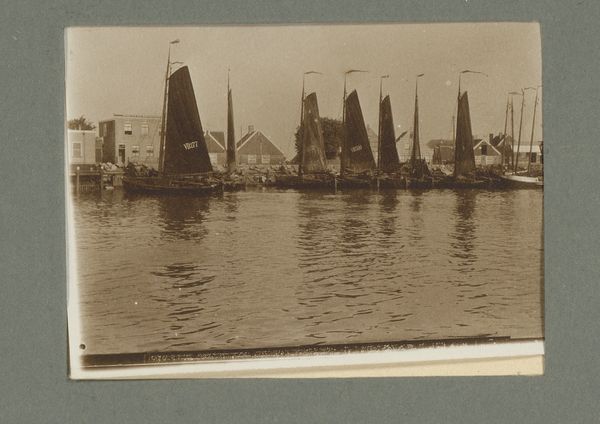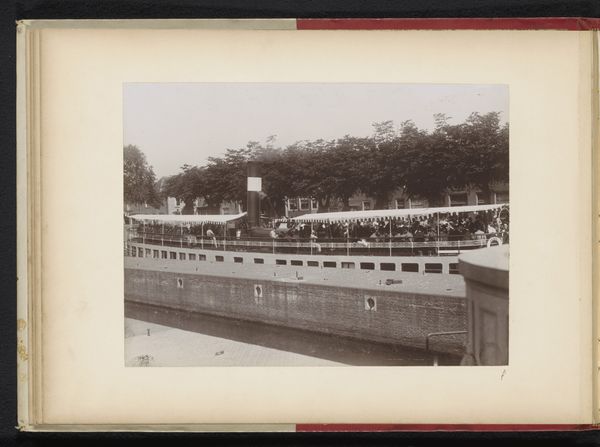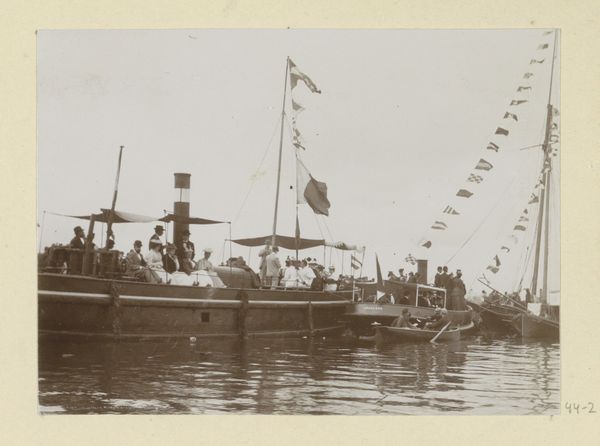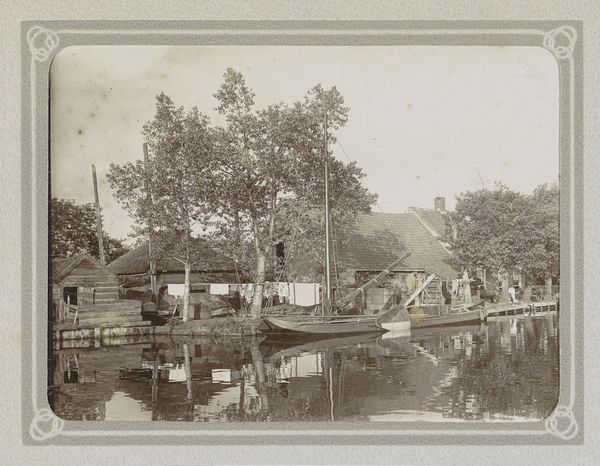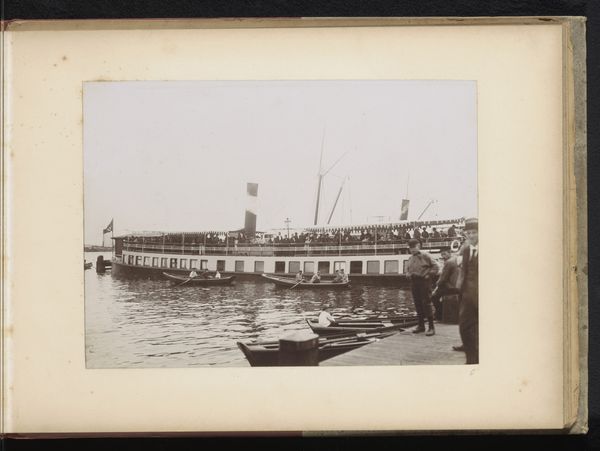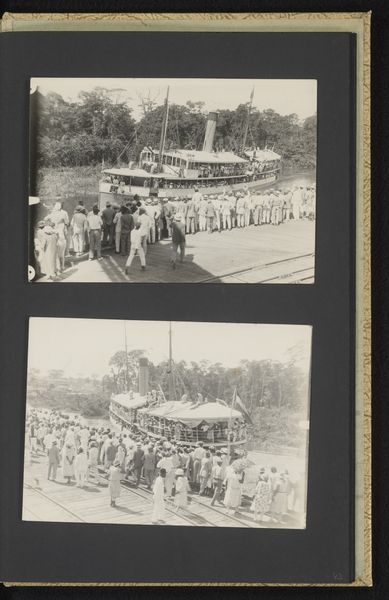
photography, gelatin-silver-print
#
portrait
#
photo restoration
#
photography
#
gelatin-silver-print
#
cityscape
#
genre-painting
Dimensions: height 98 mm, width 146 mm, height 108 mm, width 166 mm
Copyright: Rijks Museum: Open Domain
Curator: Looking at this gelatin silver print by W. de Ringh, dating between 1885 and 1922, entitled “View of a Quay with a Paddle Steamer in Sneek”, my immediate feeling is that of capturing a frozen moment in time. Everything feels still and calm even if it depicts what seems to be an event in town. What do you see? Editor: Yes, it feels quite static despite the many figures gathered along the waterfront! What strikes me is the layering of national symbols - the Dutch flag snapping on one boat, the decorations draped overhead. It feels carefully stage-managed, a constructed image of national pride. Curator: It certainly highlights the power of imagery. The photograph shows the relationship between local communities and broader national identity being forged in that time period. The steamboats are obviously new technologies arriving and creating spectacles but that is tied very consciously into expressing Dutchness. Editor: Absolutely. Waterways have always held immense significance in the Netherlands – a connection to trade, travel, and defense. The paddle steamer becomes an extension of that symbol. Note the crowds, mostly men, gathered – are they observers, participants, stakeholders in this unfolding narrative? What narratives were pushed forward at this type of events, I wonder. Curator: Well, that steamboat might not just be about technology but the development of national identity and tourism as an industry during that period. Photographs like these certainly fed that machine to promote this romantic version of a hyper-local destination that connects directly to the history of the Dutch nation-state. The way history becomes staged and sold. Editor: I see your point – the image promotes both technological advancement and deeply rooted traditions. Even the somewhat muted tones of the gelatin silver print itself contribute to a sense of historical weight and legitimacy. As if saying "this happened, this matters." Curator: The decision to present Sneek this way contributes to shaping regional Dutch identity. But you see those socio-political relationships even in genre pieces like this. I’m thinking of the patronage, production, the selection itself of what ends up represented this way for an audience. All elements come into play. Editor: Indeed. By understanding the image's composition, and the cultural context of 19th and early 20th century Netherlands, we're able to dig deeper into its layered meanings and uncover the power of what may seem like just a pleasant historical townscape. Curator: I agree, exploring the symbolism alongside the social framework unveils how it actively crafted regional and national pride in its own day – a kind of controlled collective memory.
Comments
No comments
Be the first to comment and join the conversation on the ultimate creative platform.
